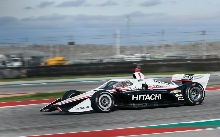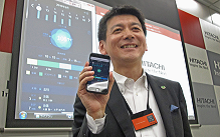Japan is renowned for its manufacturing prowess. Expert skills is central to adding value through compactness and advanced performance. A looming shortage of worker is a concern in Japan today as the working population shrinks, talented individuals age, and globalization increases the number of production sites offshore. But while many companies acknowledge the issues, it is tough to resolve this situation because it takes a lot of time and effort to train people and accumulate expertise. Another challenge is that needs are changing faster and innovation cycles are becoming shorter. So, it is essential to train people faster and more efficiently.
Daikin Industries, Ltd. has leveraged information technology in a new initiative to tackle this human resources challenge, building a training support system in co-creation with Hitachi. This system has used sensors, Hitachi's IoT platform “Lumada”, and other resources to visualize skills and create a more efficient learning environment.

Skills in manufacturing site are central to product quality. Passing on expert skills is a pressing issue for many manufactures.
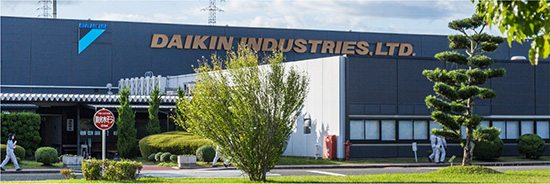
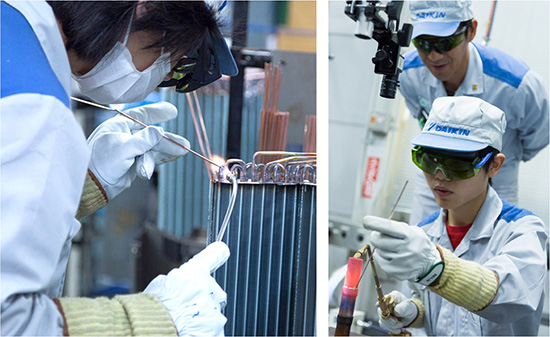
Experts provide training at Daikin’s Shiga Plant.
Daikin developed Japan's first packaged air conditioner in 1951. The company now operates in more than 150 countries. The skills of plant workers underpin its high quality. To transfer skills on, the company launched Daikin Group Succession Committee and its meister program in 2001. Other initiatives have included creating skill maps and securing more experts.
Despite these efforts, the increasing need for speed in training became even more important as the number of overseas production plants surged. One particularly must was to train workers in brazing. This accounts for around 30% of air conditioner production processes, making it a strategic skill requirement for an air conditioner manufacturer.
Tooru Inazuka, Senior Associate Officer, Deputy General Manager, Technology and Innovation Center, he says that, “Around 2,000 workers companywide are involved in brazing. But we only had a few expert workers who is named meister, they provide training. It was really hard to pass on these skills because know-how of brazing is accompanied by person.”
Mr. Inazuka says that, "We previously produced training manuals for brazing. But it’s hard for workers to acquire brazing skills from such documentation. So, expert workers ultimately had to visit workplaces around the world to teach one worker at a time.”
Brazing entails applying a gas torch to an alloy (wire feeding) with a lower melting point than copper pipes (work piece). The wire feeding bonds with the base material without melting it. A worker applies the wire feeding with one hand to the work piece, applying torch heat with the other hand. Here, it is important to maintain consistent joint and wire feeding temperatures. Workers must therefore move both hands simultaneously to carefully position the torch and wire feeding. While these actions are instinctive for expert workers, it is very hard to convey skills that can only come from experience.
Air conditioners have become more compact and sophisticated in recent years. The piping inside this equipment has thus become more complex, requiring more precise brazing. Mr. Inazuka says that, “We had to standardize brazing expertise and deploy a framework so workers could quickly master the process.”
Daikin decided to overcome its challenges by partnering and co-creating with Hitachi. Hitachi had integrated operational technology and information technology (OT and IT) amassed over the years through its IoT platform “Lumada”. It was also already developing a production process efficiency initiative based on "3M" data of man-machine-materials data, that it combined with image analysis and sensor technology. Impressed, Daikin decided to co-create and draw on both companies’ know-how. Although machines will continue to evolve, some tasks will always need a worker’s expert touch. That’s why, Daikin decided to transfer manufacturing skills for maintaining their manufacture.
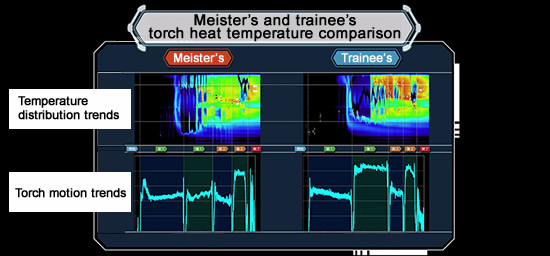
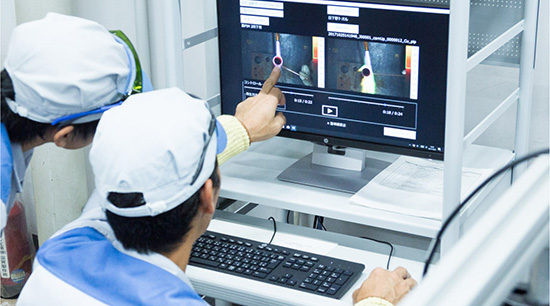
Visualizing the motions of expert workers enable trainees to master skills quickly as they can compare their work with that of expert workers.
Hitachi’s project members undertook brazing themselves to clarify issues for digitization and evaluate the sensors needed to measure changes in movements, distances, and temperatures. In the course of this effort, Hitachi communicated extensively with Daikin employees and conducted more than 10 discussion sessions. It was through these processes that Hitachi analyzed brazing processes and combined digital perspectives with the analog perspectives of expert workers and trainees.
Hitachi drew on knowledge amassed through these processes, to determine 18 elements of brazing skills. It collected data on around 50 people, including expert workers, trainees, and overseas workers. After extensive repetition and verification over just under a year, Hitachi completed the Brazing Training Support System in October 2017. The system was deployed at a training facility at Daikin’s Shiga Plant for setting up advanced production models.
The system collects time-series data to digitally capture expert hand motions, angular speeds of torches, supply angles, and wire feeding distances, and work piece temperature differences. Huge volumes of data go to Lumada for evaluations and analysis. Visualizing the motions of experts enable trainees to compare their own motions with that of experts to quickly master skills.
Mr. Inazuka says that, “Once, even expert workers were unable to see their motions. That is no longer the case.” He notes that multidirectional visualization has made it possible to standardize basic motions. He adds that, “It is easier for trainees to learn because they can see clearly how their motions differ from those of experts. And by deploying this system overseas we no longer have to send expert workers abroad to teach trainees one by one.”
The new setup has also overcome the language barrier as it uses images and numeral values. Previously, training took a lot of time when instructors visited overseas plants because they could not teach directly in local languages.
With this system, Daikin looks to halve the time needed to ready a newly hired worker for work tasks. Daikin treasures globally consistent levels of quality, and when new plants open, the system will shorten the time needed to train workers.
Video:Taking the skills of experts to the world through collaborative creation between Daikin and Hitachi
Daikin plans to gradually roll out the system at manufacturing sites in Japan and abroad. It also plans to use this system for training in other skills, enabling the company to sustainably enhance its human resources worldwide.
Daikin is also thinking of further developing the system to manage employee health and analyze behavioral psychologies. Mr. Inazuka says that, “Hitachi has told us that if you use the system to measure heat value you can identify whether workers have fevers or are otherwise unwell. Properly managing workers is also vital for quality control. After all, it is people who do the brazing. So, building on the concept is a key outcome for us of co-creating with Hitachi.”
Starting from digitizing know-how, Daikin plans to work with Hitachi to materialize digital factories that incorporate artificial intelligence and other leading-edge technologies. This current initiative between the two companies is the first step in that direction.
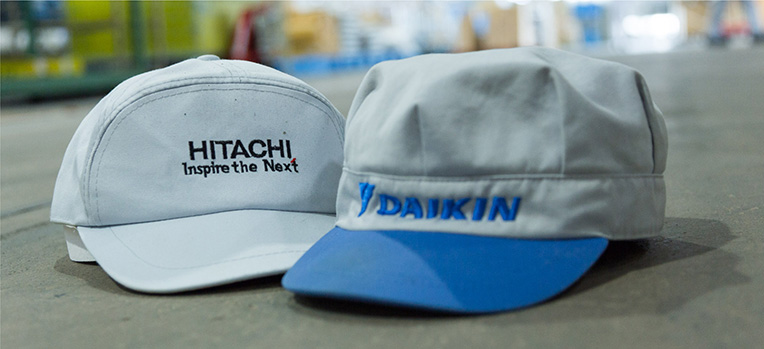
Release Date: January 2018
Solutions By: Hitachi, Ltd. Industry & Distribution Business Unit



